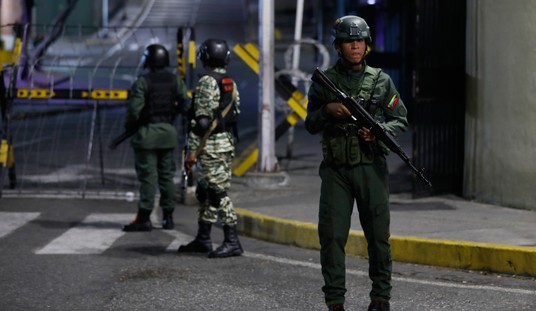Washington’s latest bailout of bleeding state governments, $26 billion worth, has gotten attention because, among other things, almost half the bailout is financed by cutting $12 billion from food stamps.
But isn’t food stamps a signature program for the liberal Democrats who passed this spending bill? Isn’t government money for the poor what Democrats are supposed to be about?
How, in these tough times, do Democrats who control congress decide who’ll get funded and who not?
This is the latest example, particularly illustrative, showing that Washington is less and less about ideas and values, and more and more about interests, power, and money.
In this case, we’re talking about unions. Of the $26 billion the bill appropriates, $16 billion goes to state Medicaid programs and the other $10 billion to unionized state and local government employees.
Of the top twenty PACs in the country, eleven are union PACs. Number eight on the list is the American Federation of State, County, and Municipal Workers ($1.8 million dollars in campaign contributions in the current election cycle). Number seventeen on the list is the American Federation of Teachers ($1.5 million in contributions).
Needless to say, 100% of these union political contributions go to Democrats.
Union membership today is mostly a government phenomenon.
Whereas 7% of private sector employees are unionized, 35% of government employees are.
So with each incremental growth in government, unionized workers gain disproportionate power and influence over all our lives. Unions understand that big government is their bread and butter, so unions, that represent 15% of all American workers, account for more than 50% of the nation’s largest Political Action Committees.
Recommended
The problem should be clear. Regardless of the narrative you want to use to explain how we got into the current difficult economic times, there is only one way out. That’s flexibility, creativity, and innovation.
But in areas that are unionized – mostly government – we hit the wall. Union contracts prohibit wage adjustments or any kind of market flexibility.
Over the last ten years, wages have risen for state and local government workers by 19% compared to 9% in the private sector.
Nobel laureate economist Gary Becker writes: “During this recession, wages did fall for many workers, but mainly among non-union workers….For example, the state of Illinois has the largest fiscal deficit as a percent of its budget of any state… It required many of its high level non-union employees to take 24 unpaid leave days, or about a 9% cut in their salaries, since the state government cannot touch the wages of their many unionized employees.”
Regarding pleas about saving teachers’ jobs, it’s not about this at all. It’s about teachers’ unions refusing to make concessions and hard adjustments like all Americans are making.
Steve Moore of the Wall Street Journal recently wrote about the refusal of the teachers’ union in Milwaukee to negotiate with the local school board and make any concession in which teachers would have to contribute something to their health plan. Their plan, according to Moore, costs taxpayers $26, 844 per family, compared to $14,500 which typifies private employer plans.
The union held out, letting some teachers get laid off, waiting for bailout from Washington.
Priorities in Washington have always been influenced by who’s got the money as opposed to who’s got the ideas. Today mores than ever.
And for the poor?
The main way to end the poverty cycle is to get poor children educated. And it’s the teachers’ unions that fight school choice.
A major driver of poor youth unemployment is the minimum wage, aggressively supported by unions.
But unions have campaign funds. So they will step ahead of the poor in line when Washington sets priorities. This will be true whether it’s a question of funding existing programs for the poor, like food stamps, or pushing forward innovative market based ideas to combat poverty.

























Join the conversation as a VIP Member